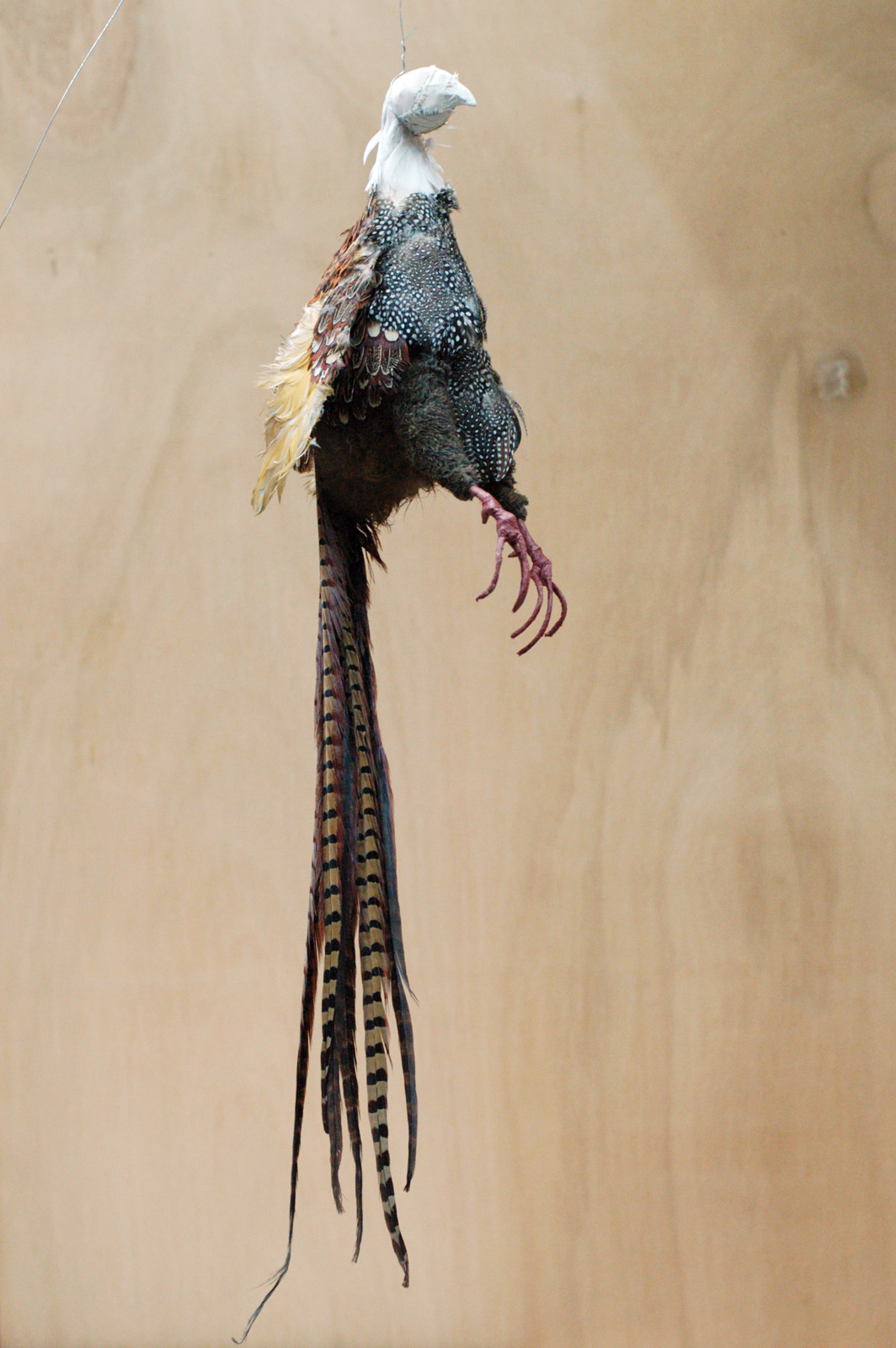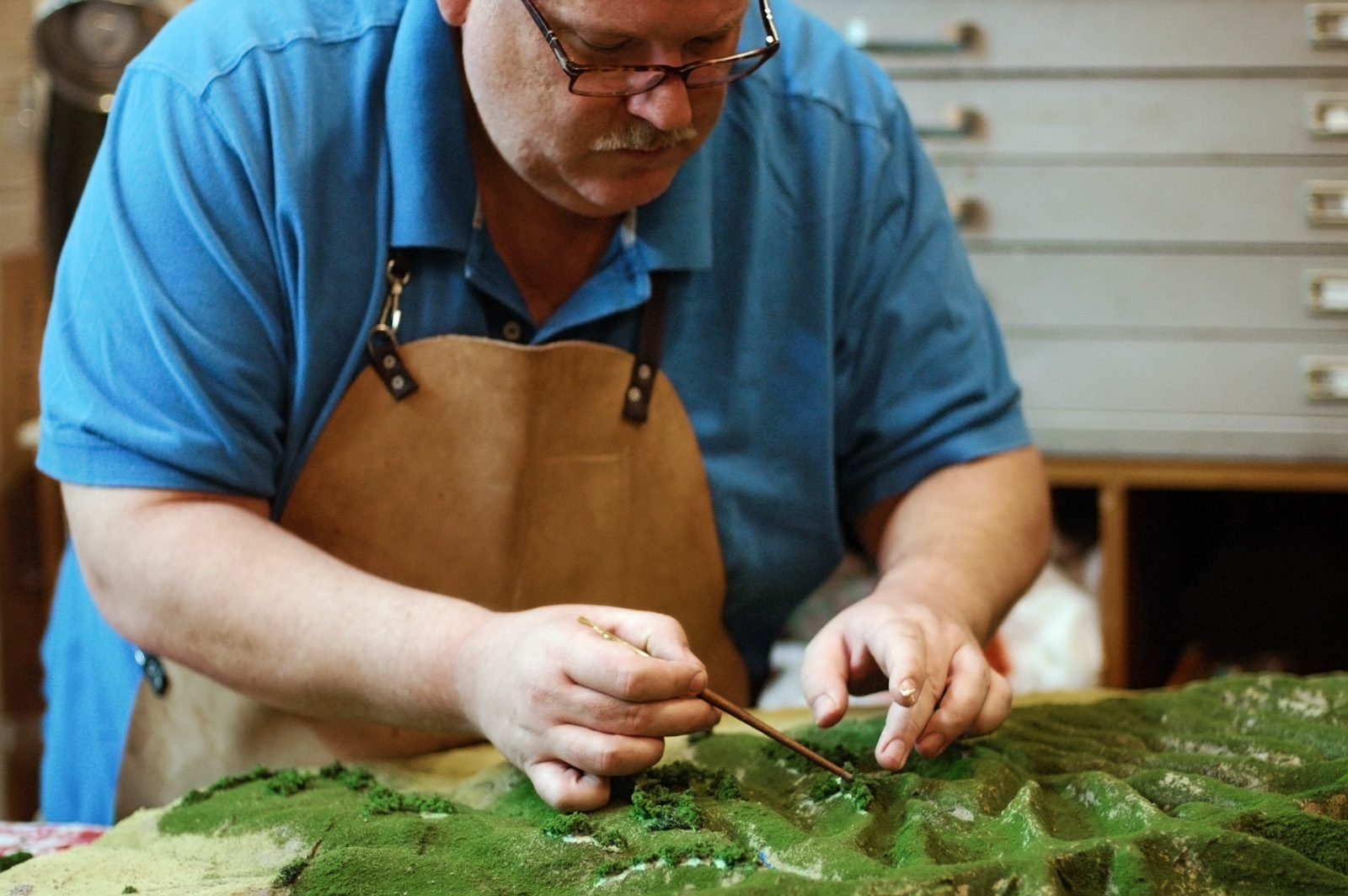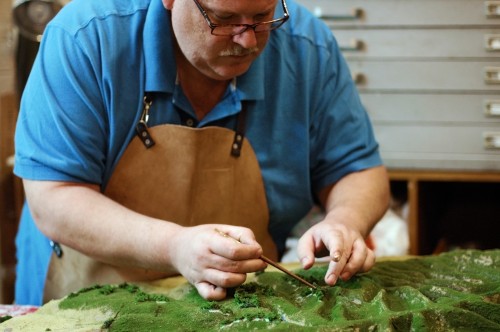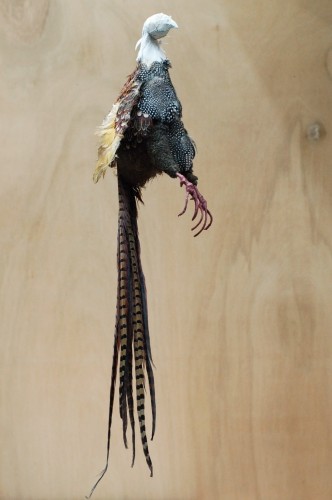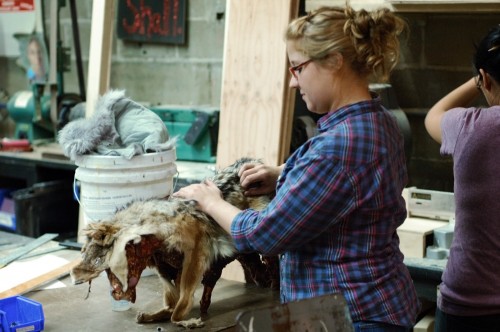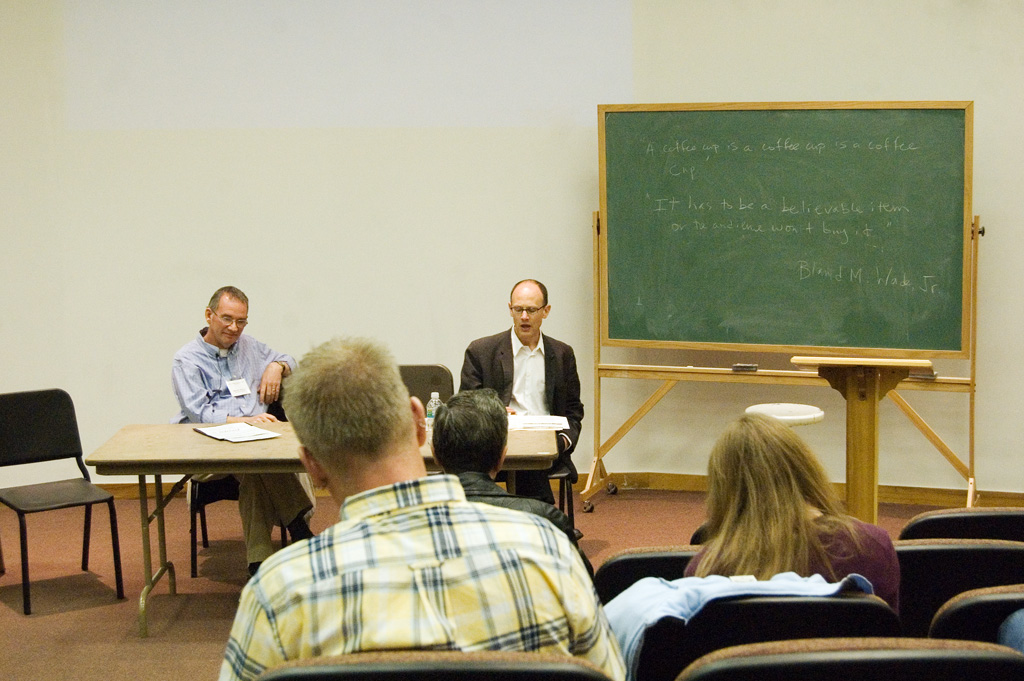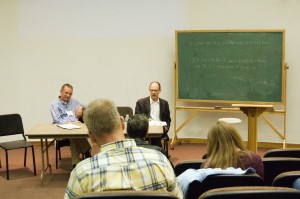In our production of King Lear, which is in its last week of performances here at the Public Theater, one of the first props we knew we needed was a collection of dead animals for when the men return from hunting. I knew from doing Timon of Athens last winter that we had nothing in stock, no one in town had anything we could rent or borrow, and you can’t just go out and buy them, so I began trying to make a pheasant.
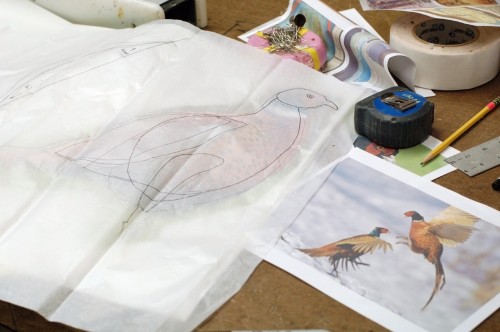
I began gathering research images and working out a pattern. I worked out the size by looking up average heights and lengths of pheasants, and from photographs where pheasants were next to people and other objects of known sizes. In retrospect, I should have looked at more pictures of dead pheasants; a pheasant has a really long neck. In most photographs of pheasants in action, the neck is contracted so the head appears close to the chest. When the pheasant is dead and hangs limp, the neck is actually a good five to six inches long. You can see I was drawing a bird with a contracted neck which left my dead pheasant looking stiffer than a real one. Ah well, now I know for the next time I have to build a dead pheasant.
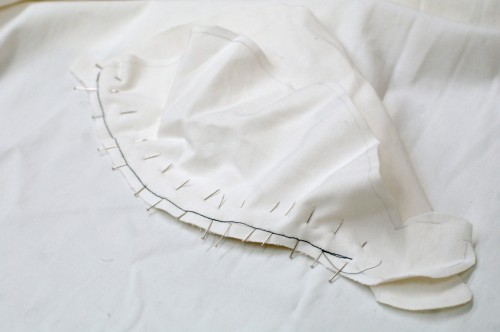
Once I had the pattern, I cut pieces out of muslin and began stitching them together. I left one side open so I could fill it with sandbags for weight. Some of the stitching was a little sloppy, which was okay because the whole thing was going to be covered in feathers and small imperfections would be obscured. Continue reading A dead pheasant for King Lear

